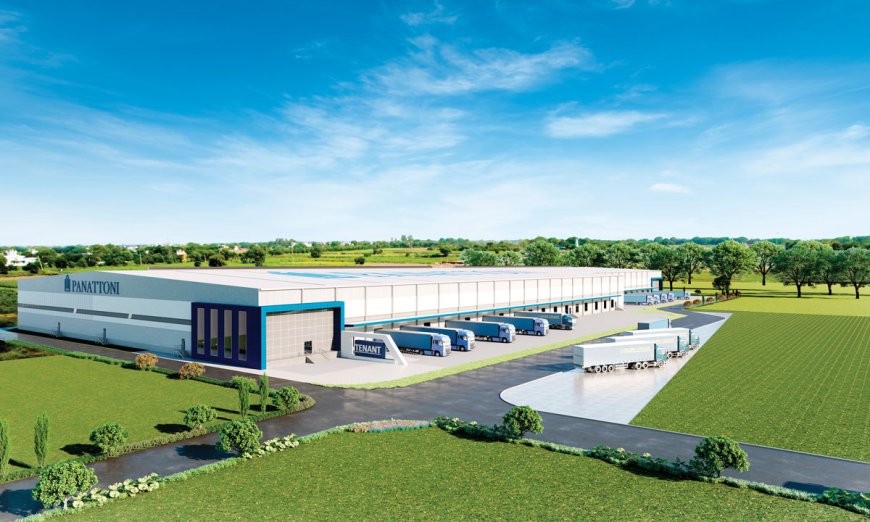The rise of micro-fulfilment centres in India’s last-mile delivery logistics

s e-commerce soars in India, the logistics industry is changing in a drastic manner, and for the better. At the heart of this change is the micro-fulfilment centre, a game-changer in the last-mile delivery business. With demand for faster delivery growing among Indian consumers and businesses competing on such expectations, micro-fulfilment centres are fast becoming part of the logistics ecosystem, more so in urban areas. This modern way has transformed the logistics and supply chain industry. It decreases costs in conducting daily operations, thus increasing the effectiveness of delivery.
Micro-fulfilment centres have also surpassed the limitations of the traditional giant warehouses. These micro-hubs are designed to be much smaller, and distribution based. This makes it possible for retailers to stay competitive as the market shifts at a rapid pace. Growth in online grocery orders, paired with the improvement in automation and robotics technologies, drove the MFC market forward and is still doing so. As consumer preference shifts more and more to convenience and speed, companies are fast adopting micro-fulfilment solutions to appeal to that trend in demand.
The changing e-commerce paradigm
The Indian online grocery market is estimated to reach US$ 26.93 billion in 2027 from US$ 3.95 billion in FY21, expanding at a CAGR of 33%, according to IBEF. However, the pandemic also resulted in a massive acceleration of this growth, thus shifting even the most traditional businesses toward online models. This brought upon the delivery aspect, an enormous challenge by itself as the increased orders have led to a major challenge: how companies can deliver as fast as possible without increasing costs.
Historically, fulfilment centres were large, warehouse-type centres located on the fringes of big cities. Of course, a bigger fulfilment centre does offer economies of scale, but these warehouse facilities often experienced a swelling requirement for same-day or next-day delivery, especially in more dense urban areas. That is where the micro-fulfilment centre has proven to be the efficiency game-changer.
Micro-fulfilment centres: The new frontier in warehousing
Simply put, micro-fulfilment centres are small, localized warehouses strategically located in or around an urban space. Businesses can store and process orders closer to consumers, and they generally take up less than 10,000 sq. ft. Equipped with state-of-the art automation technologies that help speed up picking and packing, micro-fulfilment centres assist businesses to offer flexible fulfilment strategies.
MFCs enable companies to decrease delivery times, eliminate costs on transportation, and decrease the negative impact of last-mile logistics on the environment. Delivery windows are now as short as 1-2 hours in several cities; that is a product-centric expression of the high-volume delivery processes that involve metros like Mumbai and Delhi and now Bengaluru, where the final leg of delivery is more expensive and logistically difficult within the supply chain.
The micro-fulfilment centres highly reduce delivery times to the most important degree. Places for the centres are more proximal to the customer to reduce long-distance transportation of goods across the city. Companies today can deliver in just hours, meeting the call of demanding consumers to have fast delivery services.
The other major advantage is cost savings. Last-mile delivery accounts for more than 50% of the entire shipping cost and minimizing delivery distances significantly reduces the overall fuel and labour cost. In India, where infrastructure bottlenecks and congested traffic are major constraints, the close proximity of MFCs ensures the cover shorter distances for the delivery vehicles, which makes deliveries highly efficient and less expensive.
Many of these micro-fulfilment centres are powered by robotics and AI-driven automation technologies. According to Knight Frank’s report, India is expected to witness 25% more adoption of warehouse automation over the same period. Automation enables order processing at incredible speeds - a proven edge where robotic systems are picking and packing orders at rates unbelievable for a human labour force. But it’s not just the efficiency factor. And the chances of error are also lowered; thus, this technology can ensure higher satisfaction for customers.
For e-commerce leaders, micro-fulfilment centres will be the enablers to drive operations scaling in high-population areas through smaller real estate. As these small orders are processed expeditiously at demanded locations, companies will be able to cope with the increased demands during peak shopping seasons.
Focus on environment
One of the lesser discussed but very significant benefits of micro-fulfilment centres is the role it plays in support towards sustainability. Micro-fulfilment centres minimize the distance products need to travel to customers, thus enormously cutting down carbon emissions. In its climate commitments, India aims at reducing its carbon footprint by 45% by 2030; MFCs are proving themselves to be a much more sustainable solution for urban logistics.
According to a McKinsey study, a company that utilizes MFCs within an urban area might see its delivery-related emissions reduce by as much as 15-20% in case smaller electric delivery vehicles could be used for the final leg of delivery. Many cities in India, including Delhi and Bengaluru, face severe air pollution; thus, logistics companies opt for electric vehicles and other environment-friendly solutions for goods delivery without worsening the problem.
The micro fulfilment centre boom in India
RedSeer reports the Indian warehousing and logistics sector is to grow at a CAGR of 10.5% till 2026, with further investments into the building of smaller and more technologically enabled warehouses. Companies are now increasingly looking toward MFCs as these fulfil the desires of urban consumers especially in metro cities and tier 1 cities.
Quick commerce, through services has provided grocery and essential deliveries in 10-20 minutes on the back of logistic operations powered by micro-fulfilment centres. There is no other business that is possible without the localized, hyper-efficient distribution system that MFCs support.
Micro fulfilment centres shaping the future
Not a single digital economy can succeed unless it is supported with efficient last-mile logistics. Within this context, micro-fulfilment centres are the perfect player to take lead: they make delivery both faster and more cost-effective while promoting a more sustainable future for urban logistics.
This is a fight that will prove critical in maintaining the competitive edge of the e-commerce space, and micro-fulfilment strategies will be the key for businesses. Given the number of players now in the market and consumer expectations continually increasing, it would be those who can actually deliver on speed, cost, and sustainability that lead India's e-commerce revolution.
In summary, micro-fulfilment centres are changing the last-mile delivery logistics in India by providing a faster, more efficient way that is also environmentally friendly to the growing needs of the e-commerce market. Their strategic location within the urban areas and their automation feature proves to be the most critical innovation in meeting up with modern consumption needs and the transforming logistics landscape.
|
|
Sandeep Chanda Managing Director, Panattoni India |








